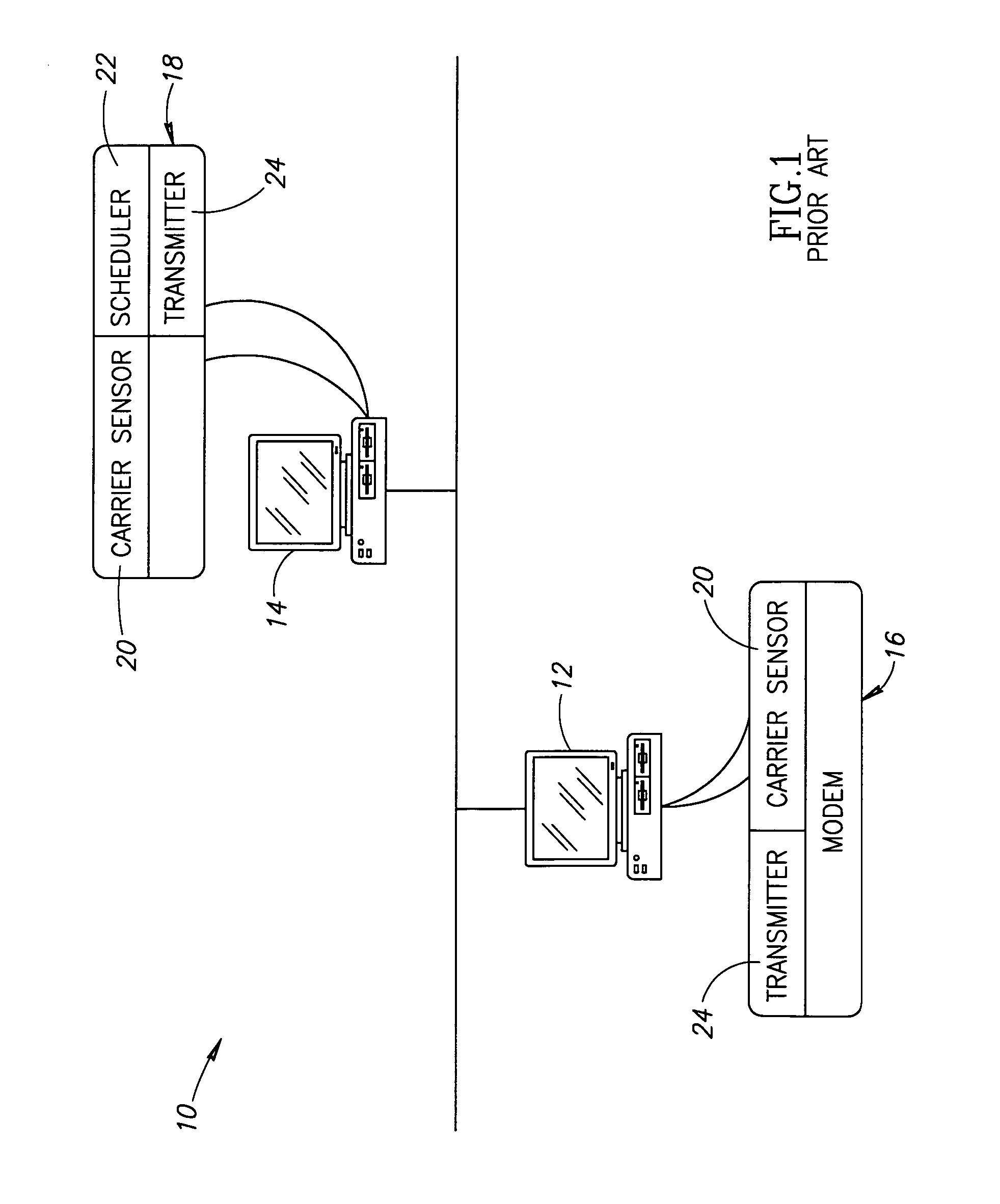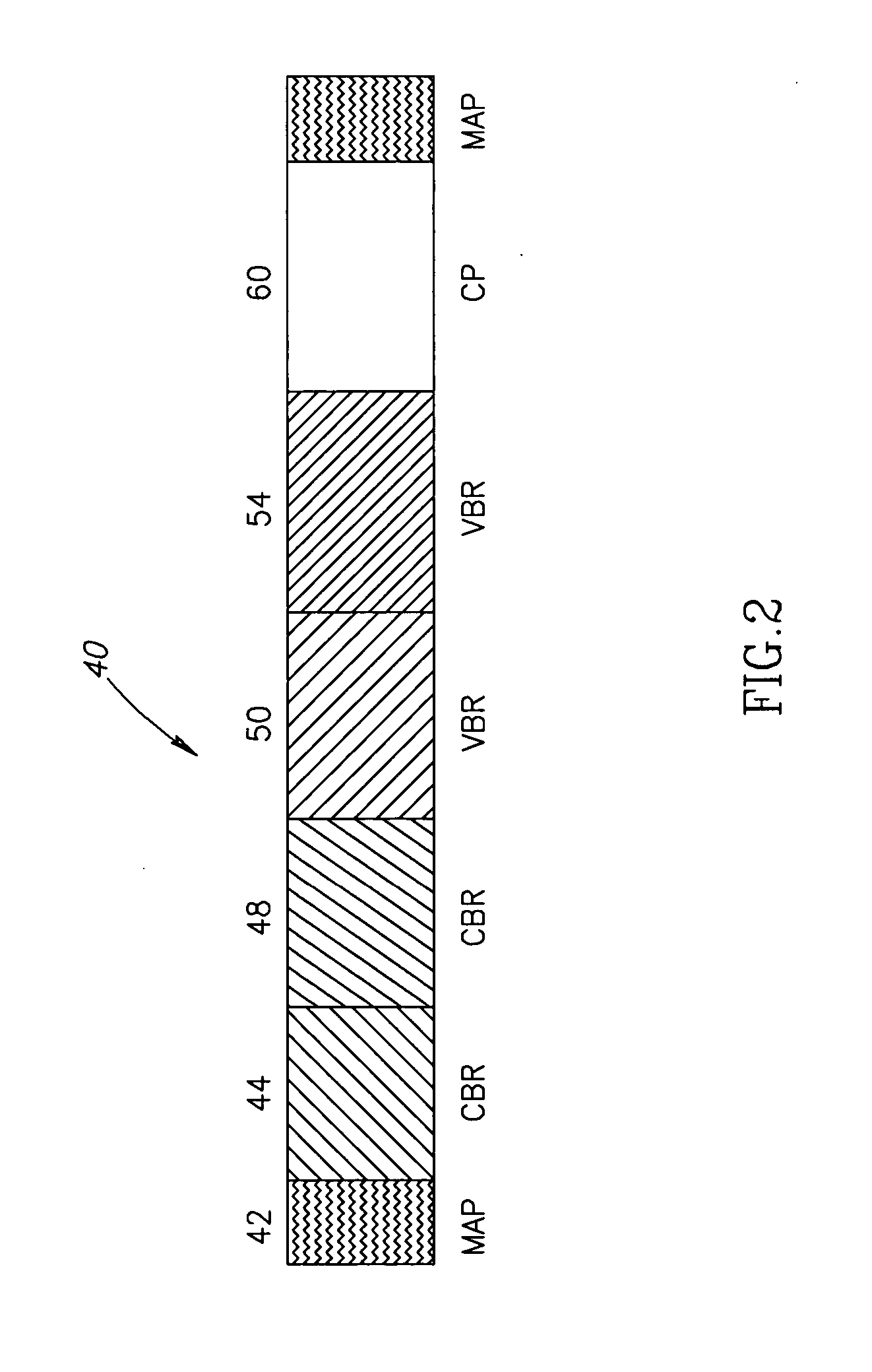Maximal resource utilization in networks
a network and resource utilization technology, applied in the field of data networks, can solve the problems of wasting significant resources, vbr is more complicated to schedule, and the level of service is not guaranteed, and the prior art map is wasteful
- Summary
- Abstract
- Description
- Claims
- Application Information
AI Technical Summary
Problems solved by technology
Method used
Image
Examples
Embodiment Construction
[0025] In the following detailed description, numerous specific details are set forth in order to provide a thorough understanding of the invention. However, it will be understood by those skilled in the art that the present invention may be practiced without these specific details. In other instances, well-known methods, procedures and components have not been described in detail so as not to obscure the present invention.
[0026] The present invention may take assigned-but-unused portions of transmission opportunities (TXOP) and may dynamically assign them to another network node. To do so, the present invention may utilize a prioritization method to determine which network node, which may detect that transmission has ended, may occupy the unused gap first. In one embodiment, the present invention may pre-assign partially overlapping TXOPs. In another embodiment, the next TXOP may be ‘moved’ to start sooner.
[0027] Reference is now made to FIG. 4, which depicts a maximal resource u...
PUM
 Login to View More
Login to View More Abstract
Description
Claims
Application Information
 Login to View More
Login to View More - R&D
- Intellectual Property
- Life Sciences
- Materials
- Tech Scout
- Unparalleled Data Quality
- Higher Quality Content
- 60% Fewer Hallucinations
Browse by: Latest US Patents, China's latest patents, Technical Efficacy Thesaurus, Application Domain, Technology Topic, Popular Technical Reports.
© 2025 PatSnap. All rights reserved.Legal|Privacy policy|Modern Slavery Act Transparency Statement|Sitemap|About US| Contact US: help@patsnap.com



